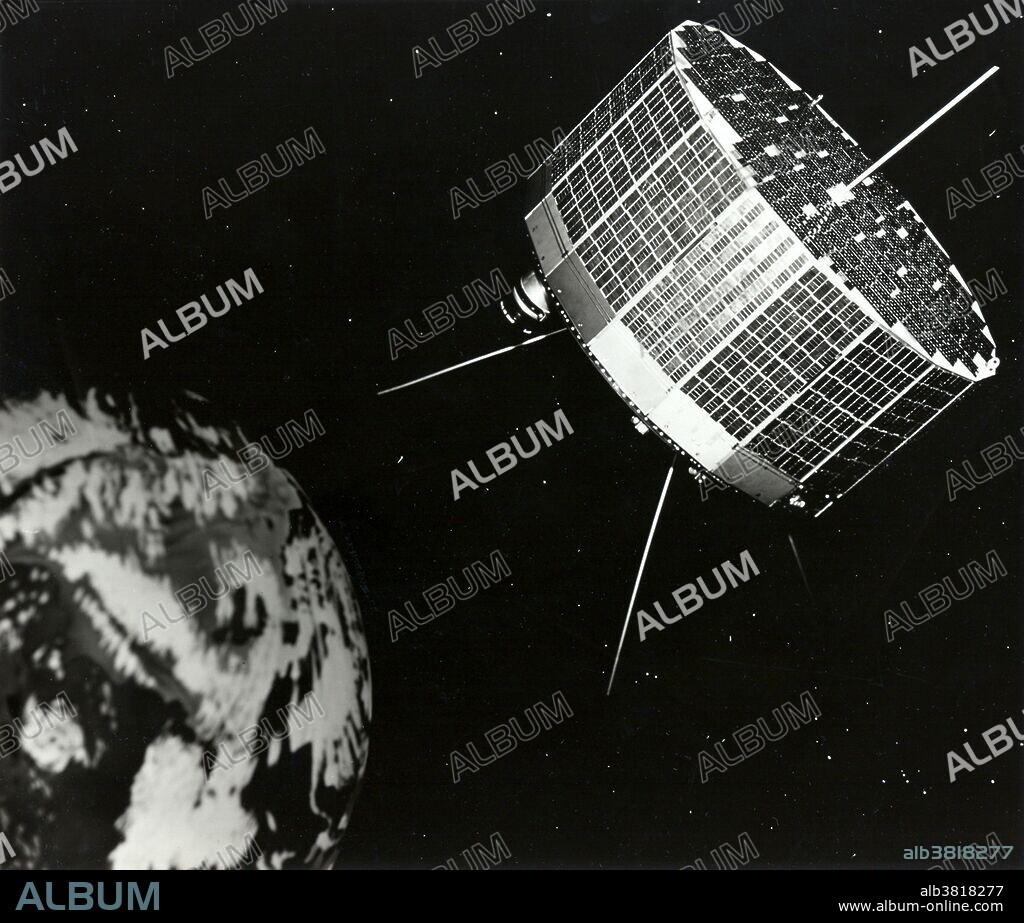alb3818277
TIROS I, First Orbital Weather Satellite, 1960

|
Add to another lightbox |
|
Add to another lightbox |



Title:
TIROS I, First Orbital Weather Satellite, 1960
Caption:
TIROS I was the first successful low-Earth orbital weather satellite, and the first of a series of Television Infrared Observation Satellites. The TIROS-1 spacecraft was launched by NASA and partners on April 1, 1960, from Cape Canaveral, Florida, in the United States. The TIROS Program's first priority was the development of a meteorological satellite information system. Weather forecasting was deemed the most promising application of space-based observations. The satellite, which weighed 270 pounds, was specifically designed to test experimental television techniques that would lead to a worldwide meteorological information system. The spacecraft carried two television cameras, a magnetic tape recorder, timer systems, transmitters and a power supply. Early photographs provided new information on cloud systems, including spiral formations associated with large storms, immediately proving their value to meteorologists.
Credit:
Album / Science Source / U.S. Army
Releases:
Model: No - Property: No
Rights questions?
Rights questions?
Image size:
4050 x 3440 px | 39.9 MB
Print size:
34.3 x 29.1 cm | 13.5 x 11.5 in (300 dpi)
Keywords:
1960 • 1960S • 20 XX TWENTIETH CENTURY • 20TH CENTURY • 20TH • 60 60'S DECADE SIXTY YEARS • 60 60'S DECADE YEARS SIXTY SIXTIES • 60S • AEROSPACE • AMERICA • AMERICAN • ASTRONAUTICS • BW • CELEBRITY • EARTH OBSERVATION • EVENT • FAMOUS • HISTORIC • HISTORICAL • HISTORY • IMPORTANT • LOW-EARTH • METEOROLOGICAL SATELLITE INFORMATION SYSTEM • METEOROLOGICAL • METEOROLOGY • METEOROLOGY • NASA • NATIONAL AERONAUTICS AND SPACE ADMINISTRATION • NOTABLE • OBSERVATION • ORBITAL WEATHER SATELLITE • RESEARCH • SCIENCE • SIXTIES • SIXTIES, THE • SPACE EXPLORATION • SPACE FLIGHT • SPACE PROGRAM • SPACE RACE • SPACE TRAVEL • SPACE-BASED • SPACEFLIGHT • TECHNOLOGICAL • TECHNOLOGY • TIROS 1 • TIROS I • TIROS PROGRAM • TIROS • TIROS-1 • TIROS-I • TWENTIETH CENTURY • UNITED STATES • US • USA • WEATHER FORECASTING • WEATHER SATELLITE • WEATHER • WELL-KNOWN • YEARS DECADE'S SIXTY SIXTIES 60 60 1960
 Pinterest
Pinterest Twitter
Twitter Facebook
Facebook Copy link
Copy link Email
Email

